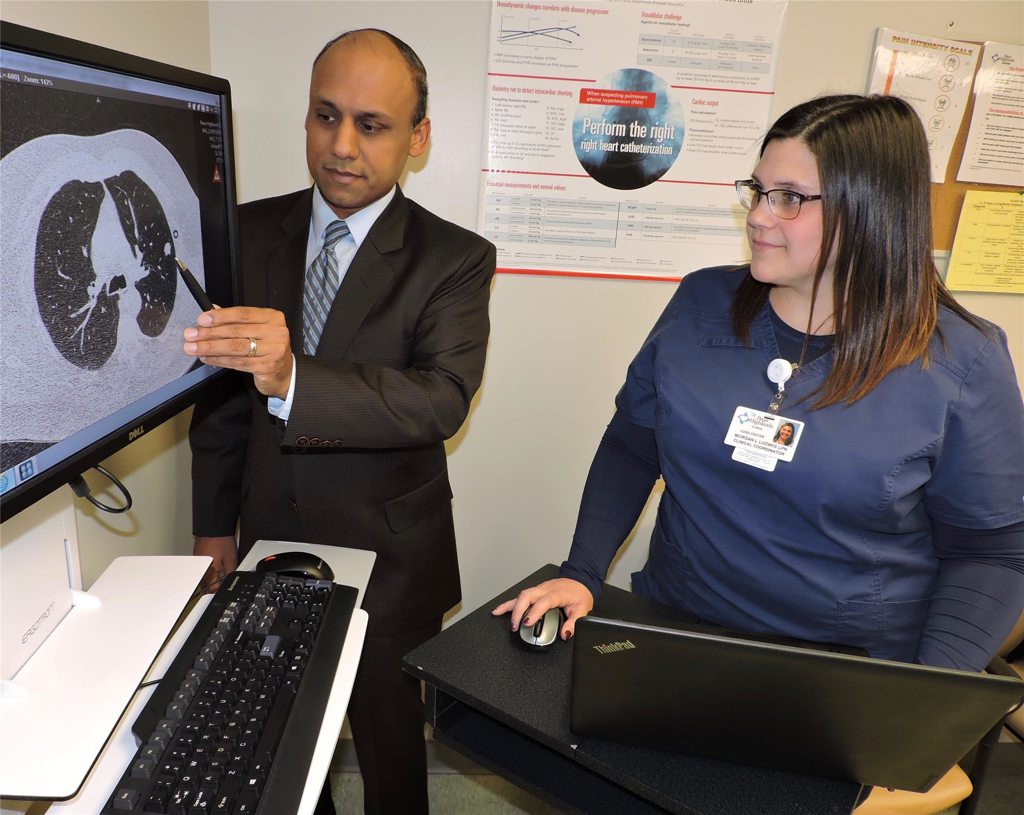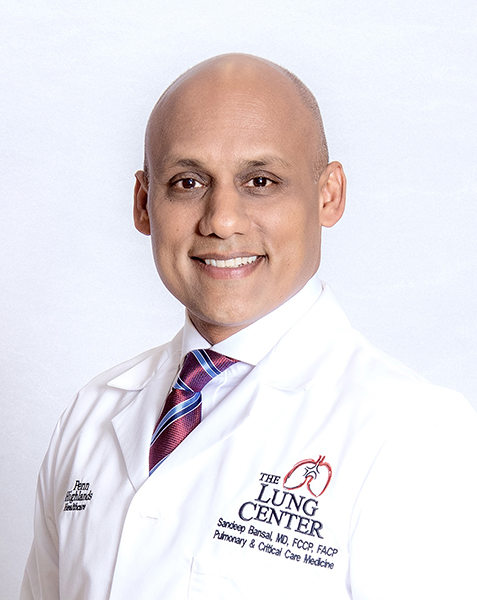
CT Lung Cancer Screenings Can Save Lives
More than 2,000 Patients Have Been Screened Through Penn Highlands’ Program
Since 1987, Penn Highlands Healthcare’s Candy Cole, RN, nurse navigator for The Lung Center, has been working in cancer care. Year after year, she watched as oncologists came back from conferences overjoyed with news of significant advancements in cancer detection and treatment. She witnessed a number of types of cancer, including breast and testicular, become more and more treatable. But, for the longest time, there were never any developments in detecting lung cancer, which is the number one cause of cancer death among both men and women, leading to more deaths than colon, breast and prostate cancers combined.
That all changed when Penn Highlands became the first healthcare facility in the region to offer CT lung cancer screenings, which, in high-risk patients, can reduce the chance of lung cancer related death by up to 20 percent, according to Dr. Sandeep Bansal, medical director of The Lung Center and Intensive Care Services at Penn Highlands DuBois.
Over the past two years, more than 2,000 patients throughout the region have been screened through Penn Highlands’ program, Cole said. Lung cancer has been detected in 24 of those patients, the majority of whom have been successfully treated with surgery or radiation.
“Just a few years ago, we would not have had the ability to detect cancer in those 24 patients until it was in very late stages,” Bansal said. “This screening can literally save lives.”
Bansal is the founder and chairman of the Lung Cancer Screening Program at Penn Highlands, which is supported by a team of physicians across multiple disciplines, including thoracic surgery, radiology, pulmonology, primary care and oncology.
“We have one of the most successful lung cancer screening programs in the country,” Bansal said. “Every positive finding on a low-dose CT scan is reviewed very carefully by qualified physicians to ensure the individual gets the best care possible.”
The screening is for patients with a long history of smoking who meet certain criteria. According to Cole, 80 percent of lung cancer cases are caused by smoking.
The screening, which is done at any of the four Penn Highlands hospitals – Penn Highlands DuBois, Penn Highlands Brookville, Penn Highlands Clearfield and Penn Highlands Elk – is a test that uses a low dose of radiation to take pictures of the lungs. It is noninvasive, doesn’t involve any prep or fasting beforehand, requires no IV or dye, and the whole process takes only about 15 to 20 minutes.
Even so, fear is a big obstacle for many patients, according to Dr. Angelo Illuzzi, medical director of the Sleep Disorders Center and Respiratory Care at Penn Highlands DuBois.
“Don’t be afraid,” urges Illuzzi. “It’s far better to catch it earlier rather than later.”
The scan has the ability to find lung cancer even at stage one, Illuzzi said. Previously, lung cancer could not be detected until a patient was showing symptoms. Because there aren’t pain receptors in the lungs, symptoms of lung cancer are not noticeable until advanced stages when the cancer generally has spread to other parts of the body.
“Of all the screenings for cancer, this screening is the most efficient and has the greatest impact when dealing with high-risk patients," according to Dr. Rodney Landreneau, thoracic surgeon of The Lung Center.
The scan is looking for nodules in the lungs, any that are larger than one centimeter – the size of a pencil eraser – generally require further evaluation, Cole said.
Once a nodule is found, a multi-disciplinary team of physicians work to determine whether it’s benign or cancerous, according to Dr. Rajesh Rao, pulmonologist, critical care specialist and sleep specialist. This is accomplished through further testing.
If the nodule is cancerous and the patient is in good physical condition, the standard of care is to remove the nodule through minimally invasive thoracic surgery, according to Landreneau. This involves a three-inch incision on the side of the chest. The associated pain and recovery is much less than with a traditional approach.
If surgery is not an option, the nodule will be treated with radiation, according to Rao.
To be a candidate for CT lung screening, patients must meet one of the following criteria:
55 to 80 years old, with at least a 30 pack-year smoking history who continue to smoke or who quit less than 15 years ago. One pack year is equal to smoking 20 cigarettes, or one pack, every day for one year.
50 years or older and with at least 20 pack-years and one or more of these risk factors: long-term exposure to asbestos, asbestos-related lung disease, chronic obstructive pulmonary disease – COPD – pulmonary fibrosis, family history – parent, sibling or child – of lung cancer, long-term exposure to silica, cadmium, arsenic, beryllium, chromium, diesel fumes, nickel, coal smoke and soot.
Most insurances provide coverage for this screening to qualified patients. Some insurances require patients be between 55 and 77 years old and have smoked for 30 pack years before the test is covered, and others vary based on age and pack years. However, Penn Highlands also offers a self-pay option to those who are between 50 and 80 years old and meet the criteria. The cost is $99.
If you would like to make an appointment for a low-dose CT scan for lung cancer screening, talk to your primary care physician or call The Lung Center at 814-375-3770 between 9 a.m. and 3 p.m. Monday through Friday.
“We all know and have loved someone who has been affected by lung cancer,” Cole said. “With this high-risk population, we can significantly reduce the chance of them dying. It’s amazing. We’re changing lung cancer outcomes.”
According to Dr. Bruno Romeo, an internal medicine physician who also specializes in pulmonology, critical care and sleep, it’s important for patients to know that it’s never too late to quit smoking.
“Some of my patients who have smoked for years and years think that if they quit now, it won’t make any difference. But that’s just not true,” Romeo said, noting that studies have shown that the lungs of a person who quit smoking decline at the same rate as those of a non-smoker, while a smoker’s lungs continue to decline at a quicker rate.
Quitting smoking can provide immediate health benefits, Romeo said. Just 24 hours after quitting smoking, your chance of a heart attack decreases, and within one year of quitting, your risk of heart disease is half that of a current smoker.
While smoking does cause permanent damage to the lungs, 10 years after you quit smoking, you decrease your risk of dying from lung cancer by 50 percent.
If you are interested in quitting smoking, Penn Highlands DuBois hosts a free Smoking Cessation Support Group in The Lung Center waiting room the fourth Tuesday of the month from 6 to 7 p.m. For questions, call the Hahne Regional Cancer Center at 814-375-3575 or The Lung Center at 814-375-3770.

